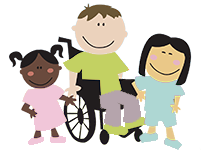Family Support for Children & Adolescents with Autism Spectrum Disorders
[vc_row][vc_column][vc_column_text]Although getting a diagnosis of an autism spectrum disorder (ASD) is not something anyone wishes for a child or adolescent, it also comes with unique learning opportunities for family members to discover ways to help their loved one grow and flourish.
 While the degree of impairment will vary significantly among those with ASD, there are tried-and-true approaches that family members can incorporate into their relationships with their loved one with ASD that can be applied at any level of impairment.
While the degree of impairment will vary significantly among those with ASD, there are tried-and-true approaches that family members can incorporate into their relationships with their loved one with ASD that can be applied at any level of impairment.
Don’t try to go it alone.
Before you can provide support for your loved one with ASD, it’s essential that you maintain basic self-care, as well as actively seek services and resources available in your community. Certainly, you want the best for the child in your life with an autism spectrum disorder, and you can’t effectively provide support for them if you don’t have the help you need from those who’ve gone before you.
You will glean insight from multiple health professionals, from your child’s pediatrician to their speech and occupational therapists. In addition, you can learn from your child’s special education teachers and numerous autism support groups, including Autism Speaks, which provides valuable resources for family members of those with ASD, including reviews of apps and a 100-day program kit for the first 100 days following your child’s diagnosis.
Provide consistency.
Because children and adolescents with an autism spectrum disorder have difficulty applying what they learn in one setting to other settings – such as from the therapist’s office to home and vice versa – it’s important to create consistency in your loved one’s environment. This will reinforce learned behaviors from other settings with alternative ways to learn the same things at home. Set up a structured schedule including regular meal times, school, therapy appointments and bedtime.
Find non-verbal ways to communicate.
Pay close attention to non-verbal clues from your child, in order to pick up on what different clues mean about your child’s comfort level. As you become more aware of these clues, you will also become aware of the motivation behind them and you can create ways to communicate using similar non-verbal clues.
Make time for play.
Remember that your child or adolescent with an autism spectrum disorder is still a child and needs more than just rigid routines and endless lessons. Figure out the things that make your child with ASD smile or laugh and reserve time everyday for playtime and allow your child to let loose a little.
A diagnosis of ASD is never celebrated, but there are also wonderful learning opportunities for family members who want to lend support. Speech and Occupational Therapy of North Texas is available to be a part of your support network as a family member of a child or adolescent with ASD. To learn more, contact us for a consultation.[/vc_column_text][/vc_column][/vc_row]
